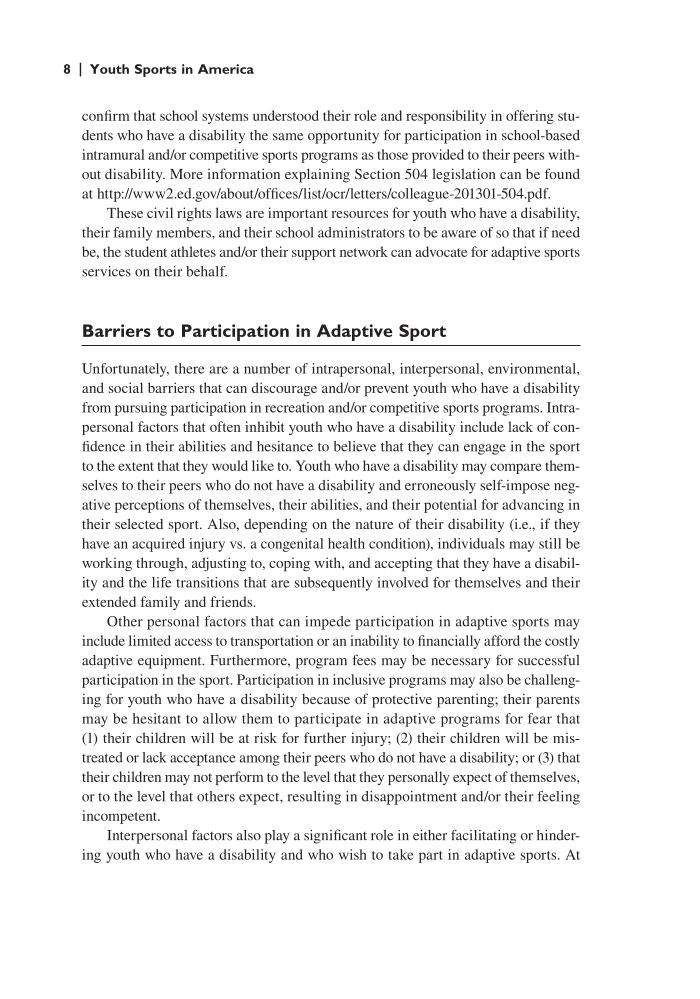8 Youth Sports in Amer i ca confirm that school systems understood their role and responsibility in offering stu- dents who have a disability the same opportunity for participation in school-based intramural and/or competitive sports programs as those provided to their peers with- out disability. More information explaining Section 504 legislation can be found at http://www2 . ed . gov / about / offices / list / ocr / letters / colleague - 201301 - 504 . pdf. These civil rights laws are important resources for youth who have a disability, their family members, and their school administrators to be aware of so that if need be, the student athletes and/or their support network can advocate for adaptive sports services on their behalf. Barriers to Participation in Adaptive Sport Unfortunately, there are a number of intrapersonal, interpersonal, environmental, and social barriers that can discourage and/or prevent youth who have a disability from pursuing participation in recreation and/or competitive sports programs. Intra- personal factors that often inhibit youth who have a disability include lack of con- fidence in their abilities and hesitance to believe that they can engage in the sport to the extent that they would like to. Youth who have a disability may compare them- selves to their peers who do not have a disability and erroneously self-impose neg- ative perceptions of themselves, their abilities, and their potential for advancing in their selected sport. Also, depending on the nature of their disability (i.e., if they have an acquired injury vs. a congenital health condition), individuals may still be working through, adjusting to, coping with, and accepting that they have a disabil- ity and the life transitions that are subsequently involved for themselves and their extended family and friends. Other personal factors that can impede participation in adaptive sports may include limited access to transportation or an inability to financially afford the costly adaptive equipment. Furthermore, program fees may be necessary for successful participation in the sport. Participation in inclusive programs may also be challeng- ing for youth who have a disability because of protective parenting their parents may be hesitant to allow them to participate in adaptive programs for fear that (1) their children will be at risk for further injury (2) their children will be mis- treated or lack acceptance among their peers who do not have a disability or (3) that their children may not perform to the level that they personally expect of themselves, or to the level that others expect, resulting in disappointment and/or their feeling incompetent. Interpersonal factors also play a significant role in either facilitating or hinder- ing youth who have a disability and who wish to take part in adaptive sports. At
Document Details My Account Print multiple pages
Print
You have printed 0 times in the last 24 hours.
Your print count will reset on at .
You may print 0 more time(s) before then.
You may print a maximum of 0 pages at a time.









































































































































































































































































































































































































































